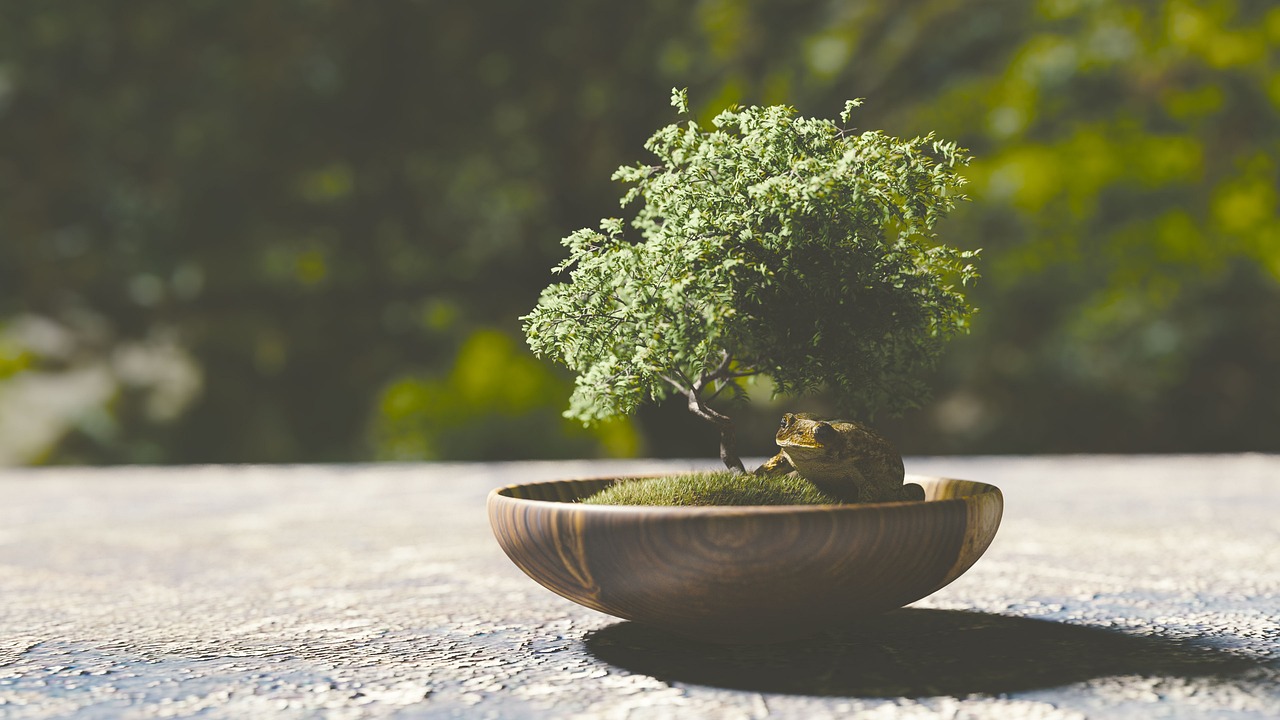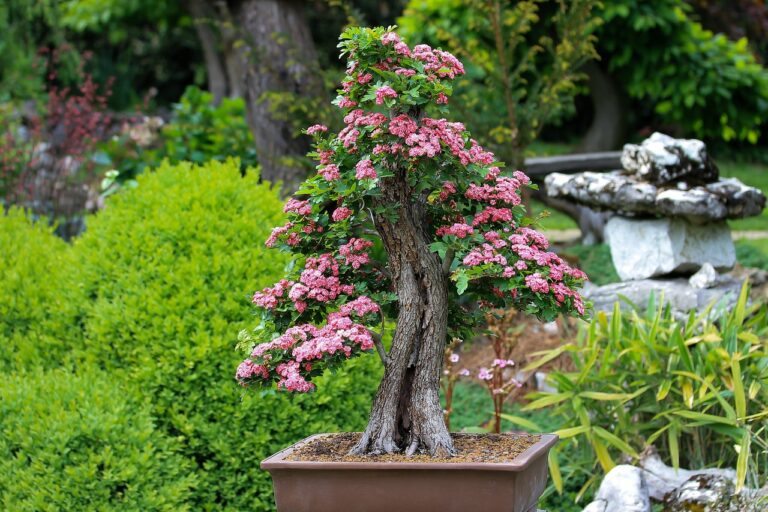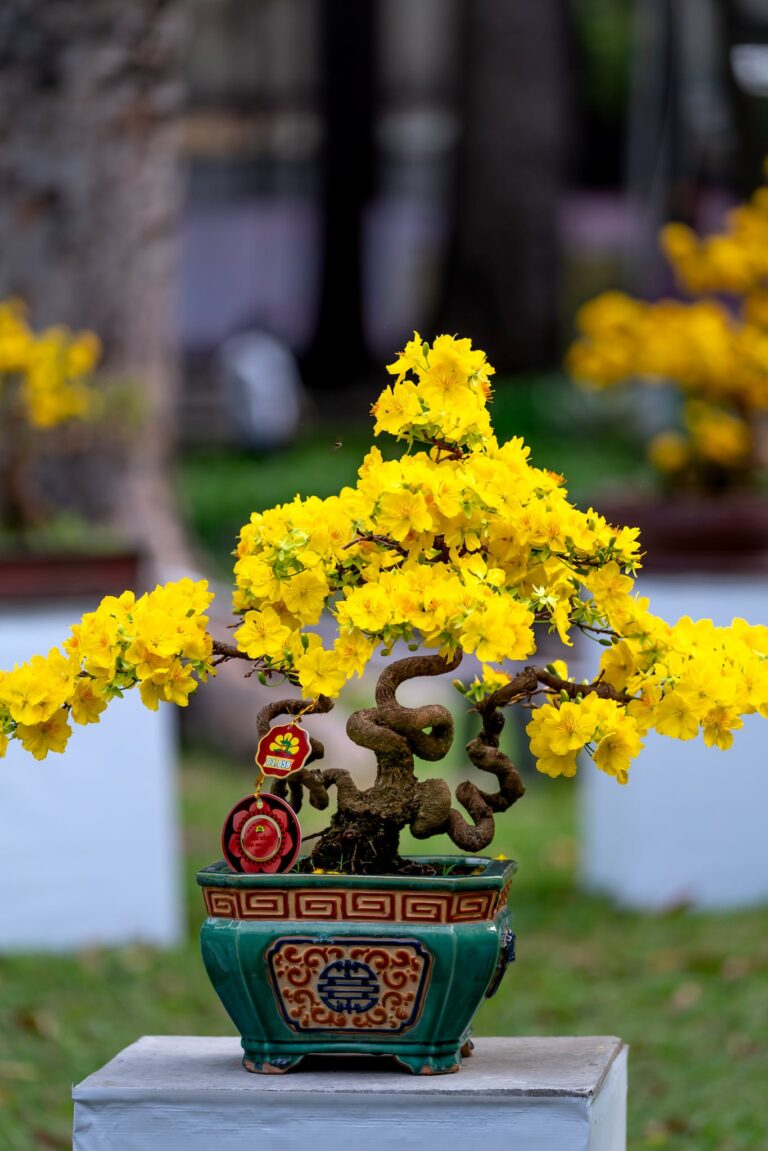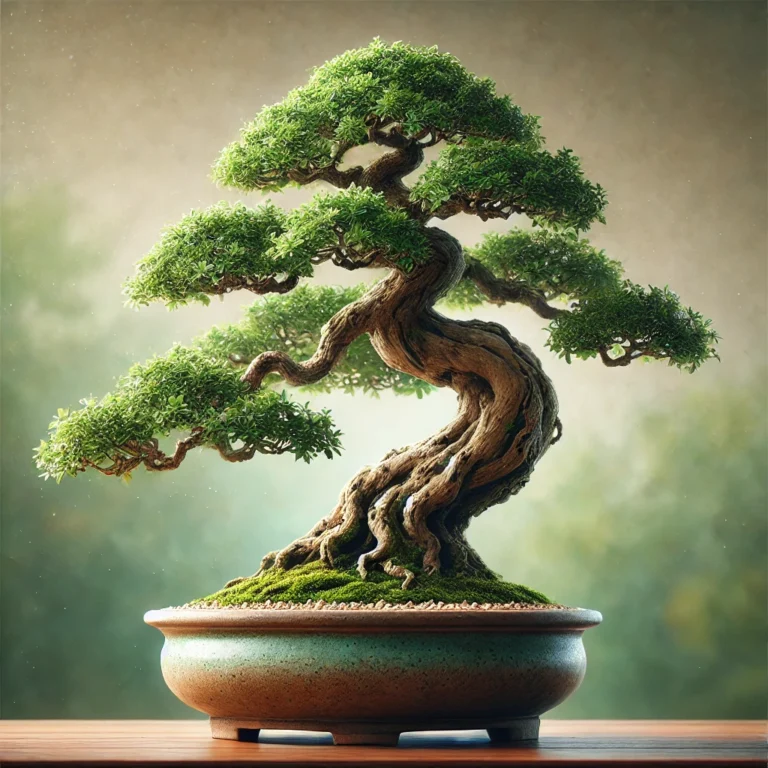Do Bonsai Trees Need a Lot of Sunlight? A Comprehensive Guide.
Do Bonsai Trees Need a Lot of Sunlight?
Bonsai trees, with their captivating allure and intricate beauty, are often associated with meticulous care and attention to detail. Among the many factors contributing to their health and vitality, sunlight stands out as a fundamental requirement. In this article, we delve into the intricate relationship between bonsai trees and sunlight, exploring the nuances of their light requirements and how enthusiasts can ensure optimal conditions for their miniature marvels.
Introduction to Bonsai Trees
Bonsai, originating from ancient Chinese and Japanese traditions, is an art form that involves cultivating miniature trees in containers, meticulously shaping them to mimic the appearance of full-sized trees. Beyond being a mere hobby, bonsai embodies a profound connection with nature and a deep appreciation for the beauty of simplicity.
Understanding Sunlight Requirements
A. Impact of Sunlight on Growth
Sunlight serves as the lifeblood of bonsai trees, driving their growth and nourishing their foliage. Through the process of photosynthesis, sunlight enables bonsai trees to convert carbon dioxide and water into glucose and oxygen, essential components for their survival and vigor. Adequate sunlight exposure promotes lush foliage, vibrant colors, and robust growth, essential qualities that define the beauty of bonsai specimens.
B. Sunlight and Photosynthesis
At the heart of bonsai cultivation lies the intricate dance of sunlight and photosynthesis. Sunlight, absorbed by chlorophyll in the leaves, initiates the chemical reactions that fuel photosynthesis, enabling bonsai trees to produce the energy they need to thrive. Without sufficient sunlight, this essential process is compromised, leading to stunted growth, weakened foliage, and overall decline in bonsai health.
C. Avoiding Sun-Related Issues
While sunlight is indispensable for bonsai health, overexposure can pose risks such as sunburn, leaf scorching, and dehydration. Proper sunlight management is crucial to mitigating these risks, whether through strategic placement, shading techniques, or supplementary artificial lighting. By understanding and addressing sun-related issues proactively, enthusiasts can ensure the long-term health and vitality of their bonsai trees.
Types of Bonsai Trees Based on Sunlight Needs
Bonsai trees exhibit varying preferences for sunlight, with some species thriving in full sun, while others prefer partial shade or even shade. Understanding these preferences is essential for providing the appropriate conditions for each bonsai variety.
- Sun-Loving Varieties: Certain bonsai species, such as junipers and pines, thrive in full sun conditions. These varieties require direct sunlight for several hours each day to maintain their vigor and vibrant foliage.
- Partial Shade Preferences: Other bonsai types, such as maples and azaleas, prefer dappled sunlight or partial shade. These species thrive in areas where sunlight is filtered through overhead foliage, providing gentle illumination without intense exposure.
- Shade-Tolerant Species: Some bonsai species, such as certain varieties of ficus and tropical trees, are well-adapted to low-light conditions and can thrive in shaded environments. These species typically exhibit broader leaves and are adapted to the understory of forests where sunlight is limited.
Optimal Sunlight Conditions for Bonsai Trees
Achieving the right balance of sunlight is crucial for maintaining the health and vitality of bonsai trees. Several factors influence optimal sunlight conditions, including the intensity and duration of sunlight exposure, as well as seasonal variations.
- Direct Sunlight vs. Indirect Sunlight: Understanding the difference between direct and indirect sunlight helps bonsai enthusiasts determine the most suitable placement for their trees. Direct sunlight provides intense illumination, while indirect sunlight offers gentler, diffused light.
- Duration of Sun Exposure: Balancing the duration of sunlight exposure is essential to prevent both underexposure and overexposure. While some bonsai species benefit from several hours of direct sunlight each day, others may require more moderate exposure to avoid sunburn and dehydration.
- Seasonal Adjustments: Adapting sunlight exposure according to seasonal changes is vital for bonsai care. As sunlight intensity and duration vary throughout the year, adjusting placement and protection measures ensures that bonsai trees receive adequate light without being exposed to harsh conditions.
Assessing Sunlight in Your Environment
Evaluating sunlight levels in your bonsai’s environment is crucial for providing the optimal conditions for growth and development in answer, do bonsai trees need a lot of sunlight? Several methods can help assess sunlight intensity and duration accurately.
- Evaluating Sunlight Levels: Observing the patterns of sunlight in your bonsai’s location provides valuable insights into its exposure throughout the day. Note the areas that receive direct sunlight, as well as those that are shaded or receive indirect light.
- Tools for Measuring Sunlight Intensity: Using tools such as light meters allows bonsai enthusiasts to quantify sunlight intensity accurately. These devices measure the amount of light reaching a specific area, helping determine whether it meets the requirements of bonsai species in cultivation.
Sunlight Management Techniques
A. Adjusting Placement for Optimal Sunlight
Strategic placement is key to optimizing sunlight exposure for bonsai trees. Depending on their species and sunlight preferences, bonsai specimens may thrive in full sun, partial shade, or filtered light conditions. Observing the movement of the sun throughout the day and adjusting bonsai placement accordingly allows enthusiasts to provide the ideal balance of sunlight for their trees.
B. Using Shade and Sun Shields
In regions with intense sunlight or during peak summer months, providing shade is essential to protect bonsai trees from excessive heat and UV radiation. Natural shade from surrounding structures or trees, as well as artificial sun shields, can help regulate sunlight intensity and prevent sunburn and dehydration. These protective measures ensure that bonsai trees receive the light they need without risking damage to their delicate foliage.
C. Artificial Lighting Solutions
For enthusiasts cultivating bonsai trees indoors or in low-light environments, supplementary artificial lighting can be a valuable resource. LED grow lights or fluorescent bulbs designed for plant growth provide the necessary spectrum of light for photosynthesis, enabling bonsai trees to thrive even in spaces with limited natural sunlight. By incorporating artificial lighting solutions, enthusiasts can create optimal growing conditions for their bonsai trees year-round.
Best Practices for Sunlight Exposure
A. Gradual Acclimatization to Sunlight
When introducing bonsai trees to outdoor environments or changing their sun exposure levels, gradual acclimatization is essential. Sudden exposure to intense sunlight can shock bonsai trees and lead to sunburn or dehydration. By gradually increasing sunlight exposure over several days or weeks, enthusiasts allow their bonsai trees to adjust gradually, minimizing stress and ensuring a smooth transition.
B. Rotating Bonsai Trees for Balanced Growth
To promote balanced growth and prevent uneven development, rotating bonsai trees regularly is recommended. By exposing all sides of the tree to sunlight uniformly, enthusiasts encourage symmetrical foliage distribution and prevent one-sided growth patterns. This simple yet effective practice ensures that bonsai trees receive adequate sunlight on all parts of their canopy, fostering overall health and aesthetic appeal.
C. Monitoring and Adjusting Sunlight Levels
Continuous monitoring of sunlight levels is essential for maintaining optimal growing conditions for bonsai trees. Enthusiasts should observe changes in sunlight intensity throughout the day and make adjustments as needed to prevent sunburn or overexposure. By staying vigilant and responsive to changes in sunlight conditions, enthusiasts can ensure that their bonsai trees receive the light they need to thrive while avoiding potential risks.
Overexposure to Sunlight: Risks and Remedies
A. Symptoms of Sun Damage
Signs of sun damage in bonsai trees include wilting, yellowing, or browning of leaves, as well as scorched or dried-out foliage. Prompt identification of these symptoms allows enthusiasts to take corrective action before irreversible damage occurs.
B. Treatment for Sunburned Bonsai
If bonsai trees experience sunburn or sun damage, immediate treatment is essential to prevent further harm. Providing shade, increasing humidity, and watering the affected trees can help alleviate stress and promote recovery. Pruning damaged foliage and providing optimal growing conditions facilitate new growth and rejuvenation, allowing bonsai trees to recover from sunburn effectively.
C. Preventive Measures
Preventing sunburn and sun-related issues in bonsai trees requires proactive measures and careful observation. Enthusiasts should provide adequate shading during peak sunlight hours, ensure proper hydration, and monitor sunlight intensity regularly. Protective barriers, such as shade cloth or sun shields, can be used to shield bonsai trees from direct sunlight while allowing for sufficient air circulation. By implementing these preventive measures, enthusiasts can safeguard their bonsai trees from sun-related harm and maintain their health and beauty.
Underexposure to Sunlight: Signs and Solutions
A. Indications of Insufficient Sunlight
Symptoms of underexposure to sunlight in bonsai trees include pale or yellowing foliage, weak growth, and elongated stems or branches. These signs indicate that the bonsai trees are not receiving an adequate amount of light for photosynthesis and growth.
B. Enhancing Sunlight Access
To address underexposure to sunlight, enthusiasts can take several steps to enhance sunlight access for their bonsai trees. This may include relocating the trees to a sunnier spot, trimming surrounding foliage to allow more light to reach the canopy, or providing supplementary artificial lighting in low-light environments.
C. Supplemental Lighting Options
In situations where natural sunlight is limited or unavailable, supplemental artificial lighting can be used to provide bonsai trees with the light they need for photosynthesis and growth. LED grow lights or fluorescent bulbs designed for plant growth emit the appropriate spectrum of light and can be adjusted to provide the necessary intensity and duration of illumination.
Sunlight and Bonsai Seasons
A. Sunlight Variations Across Seasons
The availability and intensity of sunlight vary throughout the year, depending on the season and geographical location. Enthusiasts should be aware of these seasonal variations and adjust their bonsai care routines accordingly to ensure that their trees receive adequate sunlight throughout the year.
B. Seasonal Sunlight Adjustments for Bonsai Care
Adapting bonsai care practices to accommodate seasonal changes in sunlight levels is essential for maintaining bonsai health and vitality. During the spring and summer months, when sunlight is abundant, bonsai trees may require more frequent watering and fertilization to support their active growth. In contrast, during the fall and winter months, when sunlight is scarce, bonsai trees may enter a period of dormancy, requiring less water and fertilizer.
C. Winter Sunlight Considerations
In colder climates or regions experiencing harsh winter conditions, special care should be taken to protect bonsai trees from frost damage while ensuring they receive adequate sunlight. Positioning bonsai trees in sunny spots sheltered from cold winds and providing additional insulation or protection during freezing temperatures can help maintain their health and prevent winter damage.
Common Misconceptions About Sunlight and Bonsai
A. Myth Debunking: Sunlight vs. Shade
One common misconception about bonsai care is the belief that all bonsai trees require full sun exposure to thrive. While some bonsai species do prefer full sun, others may thrive in partial shade or filtered light conditions. Understanding the specific sunlight requirements of different bonsai species is essential for providing optimal care and ensuring their long-term health and vitality.
B. Clarifying Sunlight Requirements for Bonsai
To dispel myths and misconceptions surrounding sunlight requirements for bonsai trees, it’s important to provide accurate information and guidance to enthusiasts. By clarifying the diverse sunlight preferences of different bonsai species and offering practical advice for managing sunlight exposure, enthusiasts can cultivate healthy and thriving bonsai trees that reflect the beauty of nature in miniature form.
Sustainability: Balancing Sunlight Needs with Conservation
A. Eco-Friendly Sunlight Practices
In the pursuit of bonsai cultivation, it’s essential to consider the environmental impact of sunlight management practices. Adopting eco-friendly practices such as using renewable energy sources for artificial lighting, incorporating natural shading techniques, and minimizing water consumption promotes sustainability and environmental stewardship in bonsai cultivation.
B. Minimizing Environmental Impact
Minimizing the environmental impact of bonsai cultivation involves mindful practices that prioritize conservation and ecological balance. By reducing energy consumption, minimizing waste, and adopting sustainable growing methods, enthusiasts can contribute to the preservation of natural resources and biodiversity while enjoying the beauty of bonsai cultivation.
Future Trends in Bonsai Sunlight Management
A. Innovations in Sunlight Optimization
Advancements in sunlight optimization techniques promise to revolutionize bonsai cultivation practices in the future. From smart sensors and automated shading systems to precision-controlled LED lighting, these innovations offer new opportunities for enthusiasts to optimize sunlight exposure and enhance bonsai health and vitality.
B. Technological Advances in Sunlight Measurement
Technological advancements in sunlight measurement tools and devices provide enthusiasts with greater precision and accuracy in assessing sunlight levels for bonsai care. Advanced light meters, spectrometers, and imaging systems enable enthusiasts to monitor and analyze sunlight intensity, spectrum, and duration with unprecedented detail, empowering them to make informed decisions about sunlight management for their bonsai trees.
Do bonsai trees need a lot of sunlight?
In conclusion, the relationship between bonsai trees and sunlight is a multifaceted and essential aspect of bonsai cultivation. By understanding the impact of sunlight on bonsai health, implementing effective sunlight management techniques, and staying informed about seasonal variations and emerging trends, enthusiasts can cultivate thriving bonsai specimens that reflect the beauty and resilience of nature in miniature form. With careful attention to sunlight and diligent care, bonsai enthusiasts can nurture their trees to flourish and inspire for generations to come. now you get the answer “Do bonsai trees need a lot of sunlight?







